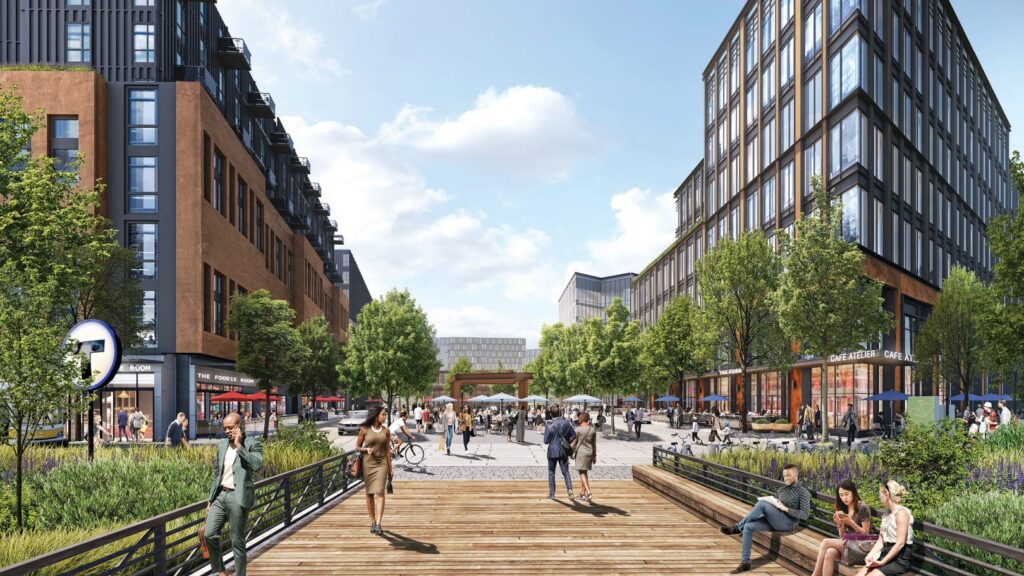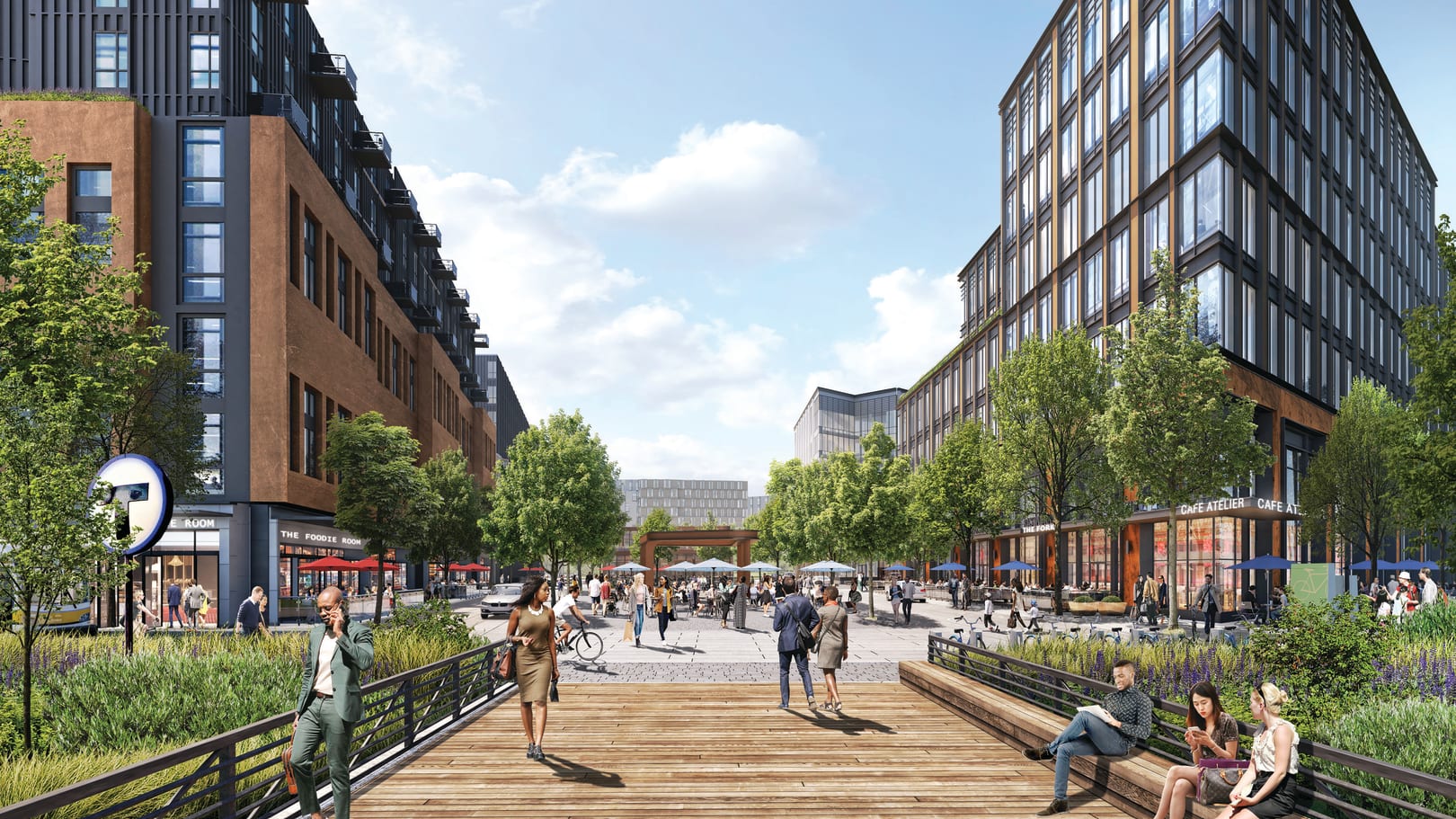
Landscape Urbanism: Reimagining Cities Through Ecological Design
Landscape urbanism is a relatively new theory of urban design that advocates for landscape, rather than architecture, as the basic building block of the city. It’s a paradigm shift that moves away from traditional, architect-centric urban planning towards a more ecologically focused and systems-thinking approach. This article will explore the principles, history, applications, and future of landscape urbanism, examining how it’s transforming the way we think about and design our urban environments.
What is Landscape Urbanism?
At its core, landscape urbanism proposes that the city should be understood and designed as a complex ecological system. Instead of viewing the city as a collection of buildings and infrastructure, it sees the underlying landscape processes – water flow, soil composition, vegetation patterns, and ecological functions – as the primary drivers of urban form. This perspective necessitates a multidisciplinary approach, integrating ecology, hydrology, geography, and other environmental sciences into the urban design process.
Key characteristics of landscape urbanism include:
- Focus on ecological processes: Prioritizing natural systems and their functions within the urban environment.
- Systems thinking: Understanding the interconnectedness of urban elements and their impact on the overall system.
- Flexibility and adaptability: Designing for change and resilience in the face of environmental and social challenges.
- Multidisciplinary collaboration: Integrating expertise from various fields, including ecology, architecture, engineering, and social sciences.
- Emphasis on public space: Creating vibrant and accessible public spaces that foster social interaction and community engagement.
The Origins and Evolution of Landscape Urbanism
The roots of landscape urbanism can be traced back to the late 20th century, emerging as a critique of modernist urban planning and its perceived failures to address environmental and social issues. Critics argued that traditional planning approaches were too rigid, focused on aesthetics rather than functionality, and often disregarded the natural environment. The term “landscape urbanism” gained prominence in the 1990s, with influential figures like Charles Waldheim, James Corner, and Mohsen Mostafavi advocating for its adoption.
Early proponents of landscape urbanism drew inspiration from ecological theory, particularly the concept of ecological succession and the idea that landscapes are constantly evolving and adapting. They also looked to landscape architecture as a model for designing with natural processes, rather than against them. Over time, landscape urbanism has evolved from a theoretical concept to a more practical approach, with numerous projects around the world demonstrating its potential.
Principles of Landscape Urbanism
Several core principles guide the practice of landscape urbanism:
Ecological Functionality
This principle emphasizes the importance of designing urban landscapes that perform essential ecological functions, such as stormwater management, habitat creation, and air purification. For example, constructed wetlands can be integrated into urban parks to filter stormwater runoff and provide habitat for wildlife. [See also: Green Infrastructure in Urban Planning]
Process-Based Design
Process-based design focuses on understanding and working with natural processes, rather than trying to control or suppress them. This approach often involves using natural materials and techniques to create landscapes that are self-regulating and require minimal maintenance. An example is designing a riverfront park that allows for natural flooding and sediment deposition, creating a dynamic and evolving landscape.
Multifunctionality
Multifunctionality refers to the ability of a landscape to serve multiple purposes simultaneously. For instance, a green roof can provide insulation, reduce stormwater runoff, and create a habitat for pollinators, all while serving as a recreational space for building occupants. This principle maximizes the benefits of urban landscapes and promotes resource efficiency.
Social Equity and Accessibility
Landscape urbanism recognizes the importance of creating equitable and accessible public spaces that benefit all members of the community. This involves designing landscapes that are inclusive, safe, and welcoming to people of all ages, abilities, and backgrounds. For example, a park designed according to landscape urbanism principles might include accessible pathways, sensory gardens for people with disabilities, and diverse recreational opportunities for children and adults.
Applications of Landscape Urbanism
Landscape urbanism has been applied to a wide range of urban design projects around the world, including:
- Parks and open spaces: Creating vibrant and ecologically functional parks that serve as community hubs.
- Waterfront development: Restoring degraded waterfronts and creating resilient coastal landscapes.
- Brownfield redevelopment: Transforming contaminated sites into productive and sustainable landscapes.
- Transportation corridors: Integrating green infrastructure into transportation corridors to improve air quality and reduce noise pollution.
- Urban agriculture: Incorporating urban farms and gardens into the urban fabric to promote food security and community engagement.
One notable example is the High Line in New York City, an elevated park built on a former railway line. The High Line transformed a derelict industrial structure into a thriving public space that showcases native plants and provides stunning views of the city. It exemplifies how landscape urbanism can revitalize urban areas and create unique and engaging public spaces.
Challenges and Criticisms
Despite its growing popularity, landscape urbanism has faced several challenges and criticisms. Some critics argue that it is overly focused on aesthetics and lacks a clear theoretical framework. Others contend that it can be difficult to implement in practice, particularly in dense urban environments. Additionally, some worry that landscape urbanism can be used to justify gentrification and displacement, as it often involves transforming neglected areas into desirable destinations.
Addressing these challenges requires a commitment to social equity and community engagement. It’s crucial to ensure that landscape urbanism projects benefit all members of the community, not just those who can afford to live in the surrounding areas. Additionally, it’s important to develop clear metrics for evaluating the success of landscape urbanism projects, taking into account both ecological and social outcomes.
The Future of Landscape Urbanism
The future of landscape urbanism is bright, as cities around the world increasingly recognize the importance of sustainable and resilient urban design. As climate change and other environmental challenges become more pressing, the need for ecologically informed urban planning will only grow. Landscape urbanism offers a promising approach to creating cities that are not only beautiful and functional but also environmentally responsible and socially equitable.
Looking ahead, several key trends are likely to shape the future of landscape urbanism:
- Integration of technology: Using sensors, data analytics, and other technologies to monitor and manage urban landscapes more effectively.
- Emphasis on resilience: Designing landscapes that can withstand extreme weather events and other environmental stresses.
- Community-based design: Engaging local communities in the design process to ensure that projects meet their needs and aspirations.
- Focus on ecosystem services: Quantifying and valuing the benefits that urban landscapes provide, such as air purification, water filtration, and carbon sequestration.
Landscape urbanism represents a paradigm shift in urban design, one that prioritizes ecological processes, systems thinking, and social equity. By embracing this approach, we can create cities that are not only more sustainable and resilient but also more livable and enjoyable for all. The principles of landscape urbanism are essential for creating sustainable urban environments. As our understanding of urban ecosystems grows, so will our ability to implement the principles of landscape urbanism effectively. The integration of landscape urbanism into urban planning is crucial for creating a more sustainable future. The implementation of landscape urbanism principles is essential for ensuring the long-term health and well-being of our cities. Embracing landscape urbanism is a critical step towards creating a more sustainable and resilient urban future. [See also: Sustainable Urban Development] The future of urban planning relies heavily on the concepts presented in landscape urbanism. By adopting a landscape urbanism framework, cities can become more environmentally friendly and socially equitable. The key to successful urban development lies in the integration of landscape urbanism principles. Landscape urbanism offers a powerful approach to addressing the challenges of urbanization in the 21st century. The principles of landscape urbanism are increasingly relevant in the face of climate change and other environmental challenges. Landscape urbanism provides a framework for creating cities that are both ecologically sound and socially just.

